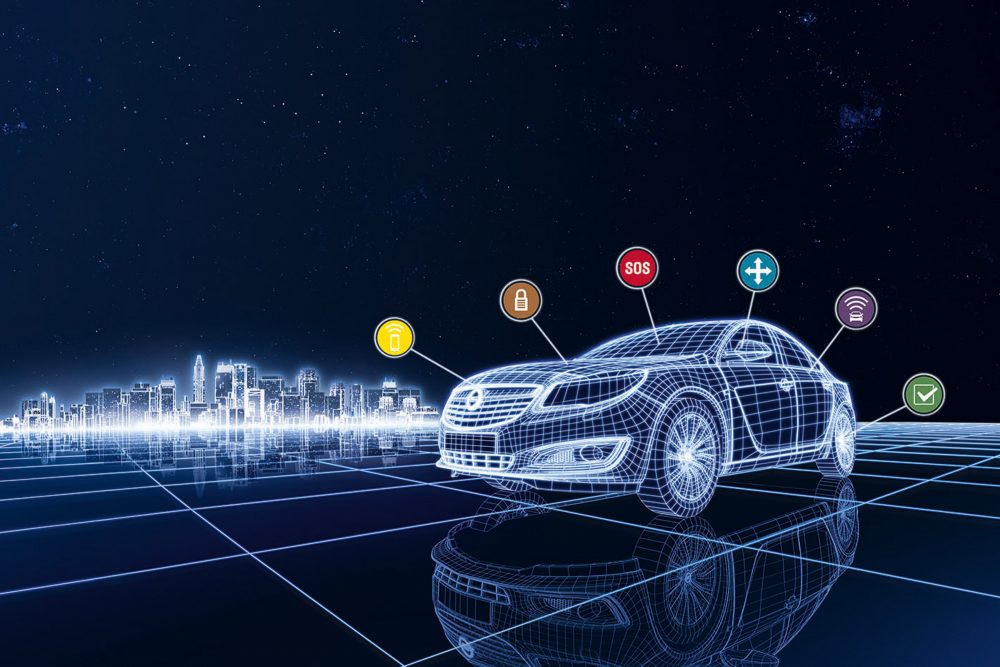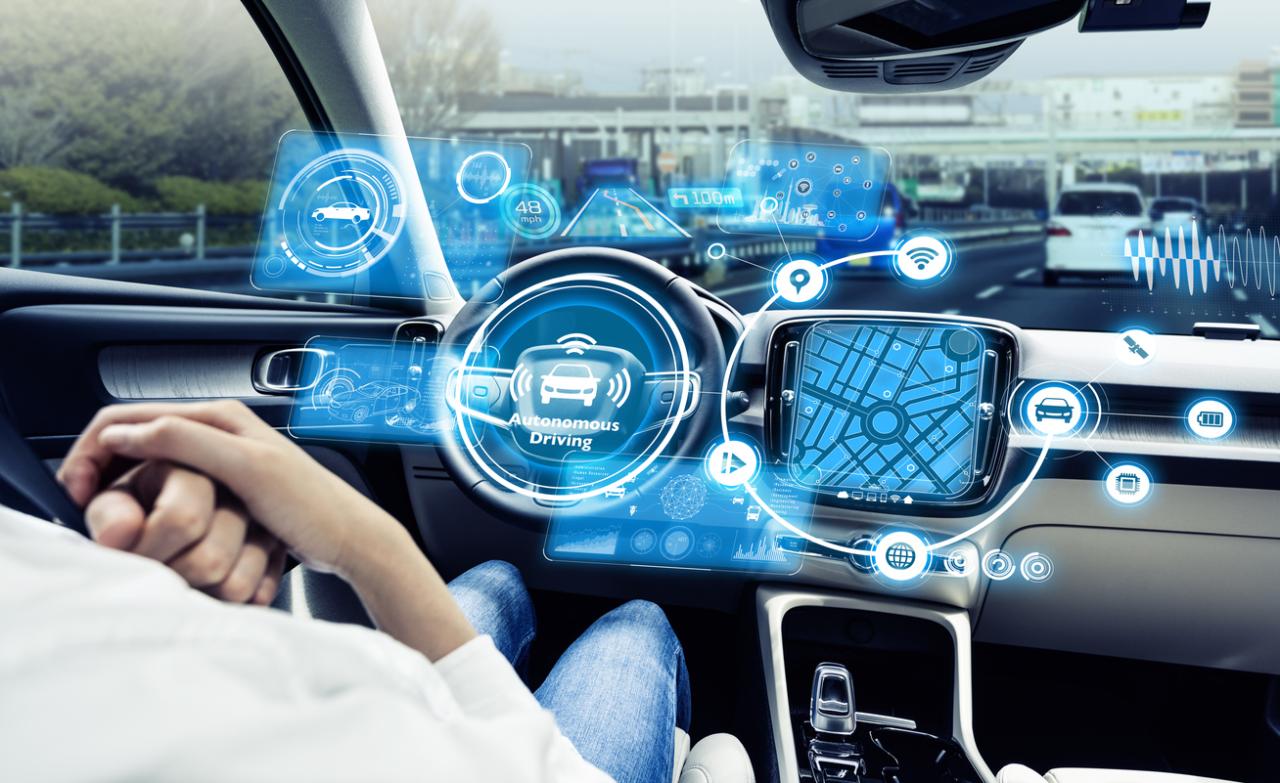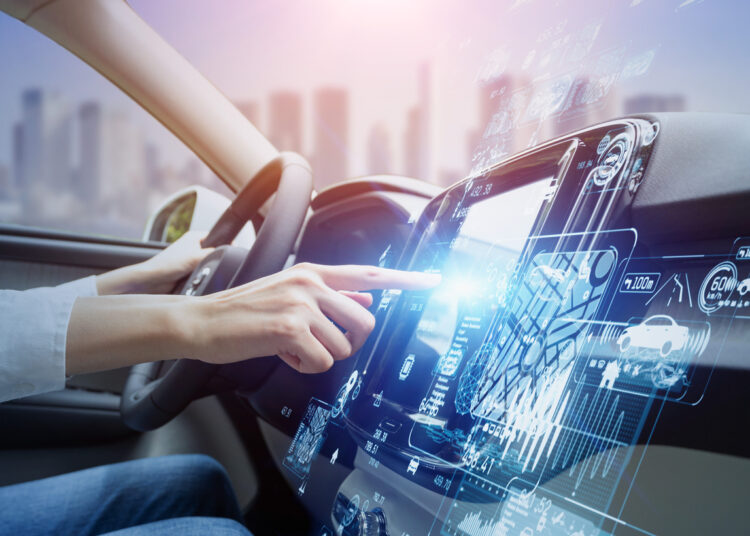The automotive industry is in the midst of its most profound transformation in over a century. Beyond electric powertrains, the true revolution lies in Vehicle Tech: Autonomous Future. What once seemed like distant science fiction—cars that drive themselves—is rapidly becoming a tangible reality, fundamentally reshaping personal mobility, public transportation, logistics, and urban planning. This isn’t just about hands-free driving; it’s about intelligent systems and advanced sensor arrays that redefine safety, efficiency, and convenience on our roads. This comprehensive exploration delves into the cutting-edge frontiers of autonomous vehicle technology, dissecting how these revolutionary advancements are not merely enhancing existing capabilities but actively redefining transportation models, optimizing traffic flow, and pushing the boundaries of what a vehicle can be. We’ll examine the intricate mechanisms behind these powerful systems, understanding their current impact, and their boundless potential to usher in an era of hyper-efficient and intelligent mobility.
Sensor Fusion and Perception

At the core of any self-driving vehicle is its ability to “see” and understand its surroundings with unprecedented detail and accuracy, a feat achieved through a sophisticated array of sensors and intelligent processing.
A. LiDAR (Light Detection and Ranging): LiDAR systems are perhaps the most crucial “eyes” of an autonomous vehicle. They emit pulses of laser light and measure the time it takes for those pulses to return, creating a precise 3D map of the environment. Unlike cameras, LiDAR works effectively in various lighting conditions, including darkness, and can accurately measure distances and shapes, providing a dense “point cloud” of data that defines objects and terrain. The latest LiDAR units are becoming smaller, more affordable, and more robust, offering greater resolution and range, enabling vehicles to perceive static and dynamic objects with extreme accuracy regardless of ambient light. This technology is essential for object detection, obstacle avoidance, and precise localization within a map.
B. Radar (Radio Detection and Ranging): Radar sensors emit radio waves and detect their reflections, measuring the distance, speed, and angle of objects. Radar excels in adverse weather conditions like fog, heavy rain, or snow, where cameras and LiDAR might struggle. It’s particularly effective at detecting metallic objects and measuring their velocity, making it ideal for adaptive cruise control, blind-spot monitoring, and forward-collision warning systems. While it provides less spatial detail than LiDAR, its robustness in challenging environments makes it a vital complementary sensor for redundancy and safety. Modern radar systems offer higher resolution and can differentiate between multiple objects more effectively.
C. Cameras and Computer Vision: Cameras provide rich visual information, allowing autonomous vehicles to identify traffic lights, road signs, lane markings, pedestrians, cyclists, and other vehicles. Coupled with advanced computer vision algorithms powered by Artificial Intelligence (AI) and deep learning, these cameras can interpret complex scenes, recognize patterns, and understand the intentions of other road users. High-resolution cameras, often with multiple lenses offering different fields of view (e.g., wide-angle, telephoto), provide the raw data for tasks like lane keeping, object classification, and perceiving subtle environmental cues crucial for safe navigation. The latest breakthroughs in neural networks allow these systems to learn and improve continuously from vast datasets of real-world driving scenarios.
D. Ultrasonic Sensors: Ultrasonic sensors emit high-frequency sound waves and measure the time for the echo to return, primarily used for short-range object detection. These sensors are invaluable for low-speed maneuvers like parking assistance, detecting curbs, or identifying objects very close to the vehicle’s body. Their simplicity and low cost make them an essential component for short-range proximity detection, complementing the longer-range capabilities of LiDAR, radar, and cameras, particularly in tight urban environments or during automated parking operations.
E. Sensor Fusion and Redundancy: The true power of autonomous driving comes from sensor fusion, where data from all these diverse sensors (LiDAR, radar, cameras, ultrasonic) is combined and cross-referenced by the vehicle’s central computer. This creates a comprehensive, real-time 3D model of the environment that is far more robust and accurate than any single sensor could provide. Redundancy, using multiple types of sensors for overlapping coverage, ensures that the system can still operate safely even if one sensor is degraded or fails. This multi-modal perception is critical for navigating complex and unpredictable real-world driving scenarios with the necessary level of safety and reliability.
AI, Software, and Control Systems
Perceiving the world is only half the battle; the autonomous vehicle’s “brain” must intelligently process this data, make decisions, and execute precise controls.
A. High-Performance Onboard Computers: Autonomous vehicles require immense computational power to process terabytes of sensor data per second, run complex AI algorithms, and make real-time decisions. This necessitates high-performance onboard computers equipped with specialized AI accelerators (like NVIDIA Drive, Intel Mobileye, or custom ASICs). These supercomputers-on-wheels are designed for ruggedness, low power consumption, and thermal efficiency, capable of handling parallel processing for neural networks and real-time path planning in milliseconds. Their robust architecture ensures reliable operation in demanding automotive environments.
B. Deep Learning and Machine Learning Algorithms: At the heart of autonomous decision-making are sophisticated deep learning and machine learning algorithms. These algorithms analyze sensor data to perform tasks like object classification (distinguishing between a pedestrian and a lamppost), scene understanding, behavior prediction of other road users, and path planning. Reinforcement learning is used to train vehicles to make optimal driving decisions by learning from simulated and real-world driving experiences, accumulating “rewards” for safe and efficient maneuvers. The continuous improvement of these algorithms through vast datasets is key to the progression of autonomous driving capabilities.
C. Path Planning and Motion Control Software: Once the environment is perceived and intentions understood, path planning and motion control software guides the vehicle. This software generates optimal trajectories, calculates precise steering angles, acceleration, and braking commands to safely navigate turns, merge lanes, avoid obstacles, and maintain a safe following distance. It factors in road rules, traffic conditions, and passenger comfort, executing these maneuvers smoothly and predictably. The algorithms constantly re-evaluate and adjust the path based on real-time sensor input, ensuring dynamic and adaptive driving behavior.
D. Mapping and Localization Technologies: Autonomous vehicles rely on highly detailed, high-definition (HD) maps that go beyond traditional GPS data. These HD maps contain precise lane markings, traffic light locations, road signs, curb heights, and even building outlines. The vehicle then uses its sensors (especially LiDAR and cameras) to continuously localize itself within this map with centimeter-level accuracy, even when GPS signals are weak or unavailable. This precise localization is crucial for knowing exactly where the vehicle is on the road, enabling highly accurate lane keeping and maneuver execution, providing a consistent reference frame for all driving decisions.
E. Vehicle-to-Everything (V2X) Communication: The future of autonomous driving is enhanced by Vehicle-to-Everything (V2X) communication. This wireless technology allows vehicles to communicate with each other (V2V), with road infrastructure (V2I like traffic lights or smart signs), with pedestrians’ and cyclists’ devices (V2P), and with the cloud network (V2N). This real-time data exchange provides situational awareness beyond what onboard sensors can detect, such as warnings about hidden obstacles around a blind corner, traffic light phasing information, or emergency vehicle alerts. V2X enhances safety, optimizes traffic flow, and supports cooperative maneuvers, paving the way for truly interconnected and intelligent transportation systems.
Advancing Autonomy Levels

Autonomous vehicle technology is often categorized into different levels, indicating the degree of automation and human involvement.
A. Level 2: Partial Driving Automation (ADAS): Most new vehicles today offer Level 2 Advanced Driver-Assistance Systems (ADAS). These systems provide partial driving automation, where the vehicle can control both steering and acceleration/braking in specific scenarios, but the human driver must remain fully engaged, supervise the system, and be ready to take over at any moment. Examples include Adaptive Cruise Control with Lane Keeping Assist, where the car maintains a set speed and distance from the vehicle ahead while staying centered in its lane. While impressive, this level still requires constant human attention.
B. Level 3: Conditional Driving Automation: Level 3 systems allow the vehicle to perform all dynamic driving tasks under certain conditions (e.g., on specific highways, in slow-moving traffic). Crucially, the human driver does not need to constantly monitor the environment but must be ready to intervene within a few seconds if the system requests it. This “eyes-off” but “mind-on” approach presents significant challenges in handing back control to the human. Honda’s Legend and Mercedes-Benz’s DRIVE PILOT are among the first to offer certified Level 3 systems in limited markets, primarily for traffic jam assist.
C. Level 4: High Driving Automation: At Level 4, the vehicle can perform all driving tasks and monitor the driving environment under specific, pre-defined operating conditions (e.g., within a geofenced area, specific weather conditions). If the system encounters a situation it cannot handle, it will safely pull over and stop if the human driver doesn’t take over. Human intervention is generally not required within the operational design domain. This level is characteristic of robotaxis operating in designated urban zones, such as Waymo and Cruise services in select U.S. cities, where the system handles all driving functions within its capabilities.
D. Level 5: Full Driving Automation: Level 5 represents the ultimate goal: full driving automation. The vehicle can perform all dynamic driving tasks under all road conditions and environmental circumstances, equivalent to a human driver. No human intervention is ever required, and the vehicle would not even need a steering wheel or pedals. This level allows for truly autonomous transportation without any human input, transforming vehicles into mobile offices, living rooms, or entertainment centers. While substantial progress has been made, true Level 5 autonomy faces significant technical, regulatory, and ethical hurdles and remains a future aspiration rather than a current reality for widespread deployment.
Reshaping Industries and Society
The rise of autonomous vehicle technology extends far beyond individual cars, promising a profound reshaping of entire industries, urban environments, and societal norms.
A. Transformation of Transportation Services: Autonomous vehicles are poised to revolutionize transportation services. Robotaxis (autonomous ride-hailing services) could offer cheaper, more convenient, and safer alternatives to traditional taxis, potentially reducing private car ownership in urban areas. Autonomous public transit (buses, shuttles) could provide more flexible and efficient routes, especially in off-peak hours. The integration of autonomous fleets into existing transport networks promises to optimize urban mobility, reduce congestion, and improve access to transportation for underserved communities.
B. Logistics and Supply Chain Optimization: Autonomous trucks, delivery robots, and drones are transforming logistics and supply chains. Self-driving trucks could operate 24/7, reducing long-haul transportation costs and addressing driver shortages. Automated last-mile delivery robots and drones could provide efficient, on-demand delivery services, particularly in urban areas, revolutionizing e-commerce fulfillment. This automation promises faster, more reliable, and ultimately cheaper movement of goods, impacting everything from manufacturing to retail and consumer delivery.
C. Urban Planning and Infrastructure Development: The widespread adoption of autonomous vehicles will significantly impact urban planning and infrastructure. Cities may see reduced need for vast parking lots (as vehicles become shared and self-parking), potentially freeing up valuable urban real estate. Traffic flow could be optimized by interconnected autonomous vehicles, reducing congestion and emissions. The focus of infrastructure development might shift to supporting autonomous capabilities, such as smart traffic lights communicating with vehicles, and specialized lanes or zones for autonomous traffic, leading to more efficient and sustainable urban environments.
D. Safety and Accident Reduction: One of the most compelling promises of autonomous vehicles is a dramatic improvement in road safety. Human error is a primary cause of accidents (distraction, fatigue, impairment). Autonomous systems, with their 360-degree perception, instant reaction times, and adherence to traffic laws, theoretically have the potential to significantly reduce collisions, injuries, and fatalities. This could save millions of lives globally and reduce the immense societal and economic costs associated with road accidents.
E. New Business Models and Economic Opportunities: The autonomous future will spawn entirely new business models and economic opportunities. This includes companies developing autonomous software stacks, sensor manufacturers, high-definition mapping services, maintenance and charging infrastructure for autonomous fleets, and new insurance models. The shift from private car ownership to Mobility-as-a-Service (MaaS) could create new service providers and revenue streams, fundamentally altering the automotive industry’s value chain.
Challenges and Ethical Considerations
Despite the immense promise, the path to a fully autonomous future is fraught with complex technical, regulatory, and ethical challenges that demand careful consideration and proactive management.
A. Safety Validation and Regulation: Proving the safety and reliability of autonomous vehicles, especially in complex, unpredictable real-world scenarios, is paramount. This requires billions of miles of testing (both virtual and physical) and robust safety validation methodologies. Governments worldwide are grappling with establishing clear and consistent regulatory frameworks for autonomous vehicles, addressing issues like testing protocols, certification, liability in accidents, and operational domains. The lack of unified global regulations remains a significant hurdle to widespread deployment.
B. Ethical Decision-Making (The “Trolley Problem”): Autonomous vehicles will inevitably encounter unavoidable accident scenarios. Programming these vehicles to make ethical decisions in such “trolley problem” situations (e.g., minimizing harm when an accident is imminent, choosing between two bad outcomes) is a profound ethical challenge. Should the car prioritize the occupants, pedestrians, or minimize overall damage? Who defines these ethical rules, and how do they align with societal values? These are complex philosophical and engineering dilemmas that require broad societal consensus.
C. Cybersecurity Risks and Vulnerabilities: As autonomous vehicles become highly connected, sophisticated computers on wheels, they become potential targets for cybersecurity attacks. Hacking into a vehicle’s control systems, stealing sensitive data, or disrupting autonomous fleets poses significant risks to safety and privacy. Robust encryption, secure software architectures, over-the-air (OTA) updates for rapid patching, and continuous threat monitoring are critical to safeguard autonomous vehicles from malicious actors.
D. Public Acceptance and Trust: Despite the safety potential, public acceptance and trust in autonomous vehicles remain a significant barrier. High-profile accidents, even if rare, can severely impact public perception. Educating the public about the technology, demonstrating its safety benefits, and addressing concerns about job displacement and algorithmic control are crucial for building the necessary societal trust for widespread adoption. Transparency in system limitations and incident reporting is also vital.
E. Job Displacement and Workforce Transition: The transformation of transportation and logistics by autonomous vehicles will inevitably lead to job displacement for professional drivers (truckers, taxi drivers, bus drivers). Societies must proactively address this through workforce reskilling and lifelong learning programs, economic diversification initiatives, and strong social safety nets to ensure a just transition for impacted workers and prevent widespread economic disruption.
F. Legal and Liability Frameworks: Existing legal frameworks were designed for human drivers. The introduction of autonomous vehicles necessitates new legal and liability frameworks. Who is liable in an autonomous vehicle accident—the owner, the manufacturer, the software developer, or the sensor supplier? Developing clear legal precedents and insurance models that account for autonomous operation is a complex legal challenge that needs to be resolved for commercial viability and public confidence.
Conclusion
Vehicle Tech: Autonomous Future is not a distant dream; it’s an unfolding reality that promises to redefine mobility as we know it. From the intricate sensor fusion systems that allow vehicles to “see” to the sophisticated AI brains that make real-time decisions, these innovations are driving unprecedented levels of safety, efficiency, and convenience. While navigating the complex ethical, regulatory, and societal implications will be an ongoing journey, the immense potential for reduced accidents, optimized urban planning, and entirely new transportation services is truly boundless. The road ahead is undoubtedly challenging, but the transformative power of autonomous vehicles to create a safer, smarter, and more accessible future for transportation is an exciting and inevitable destination.












